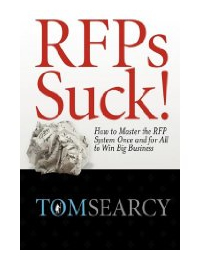Strategy
Focus, Focus, Focus
Posted on January 12th, 2010. One of the big weak spots in my own business development is focus. I'm a great starter, not a great finisher.
One of the big weak spots in my own business development is focus. I'm a great starter, not a great finisher.
As soon as I hear of a new, promising approach I love to check it out, research it, try it out for myself.
It makes me a great resource for deep up-to-date knowledge on a broad range of business development topics. But I have to really force myself to follow through and keep going with certain approaches rather than move on to new things once I've got good at them.
In fact, persistence and focus are under-recognised hallmarks of great rainmakers.
Often when I look at the business development activities of some of my clients, the best advice I can give them is “do less stuff – but do more of it”.
Rather than joining 5 networking groups but only going occasionally – join 2 and go to every meeting. Rather than trying to run seminars, speak at conferences, write an article a month, a weekly blog and a podcast – pick one or two and do them really well.
You're on Twitter, Facebook, Linkedin and OnRamp? Think about focusing your activities on one or two.
Focus and persistence help you in two ways:
- Focusing means you do a better job at each of the business development activities you perform. You learn the skills of the trade through repetition and feedback: be it networking, public speaking, writing or tweeting.
- Your potential clients hear your message consistently. It takes multiple interactions with you before clients feel comfortable buying from you. If you focus on a smaller number of channels, the clients who use those channels will hear from you or interact with you on multiple occasions. If you alternate between many channels you'll hit more people – but you won't get the depth of interaction necessary for them to feel they know you well enough to hire you.
One of the most obvious areas where lack of focus and persistence shows is with blogs. I can't tell you the number of professional service firm websites I've seen (including a number of marketing consultants who should know better) where there are a dozen or less blog entries over the last couple of years, or it started in a blaze of activity, but the last post was 5 months ago.
How do you think this looks to clients? There are really only two interpretations they can make. Either you have nothing to say, or you can't be bothered saying it. Neither of those is a good message to be putting out into the marketplace.
If you are in this situation, a quick piece of advice: turn your longer blog posts into articles and replace the blog with an (undated) articles section on your site. If you haven't got any blog posts meaty enough to turn into articles, then just kill the blog – it's a liability. And seriously consider why on earth you were persuaded into starting one in the first place.
 1. Well, I said the list was in no particular order, but who better to start with than
1. Well, I said the list was in no particular order, but who better to start with than  2.
2.  3. After co-authoring The Trusted Advisor with David Maister and Rob Galford,
3. After co-authoring The Trusted Advisor with David Maister and Rob Galford,  4.
4.  5.
5.  6. Sadly the only female in the Guru12,
6. Sadly the only female in the Guru12,  7. Like Charlie Green,
7. Like Charlie Green,  8.
8.  9.
9.  10. Another “New Kid on the Block” who's actually been around quite a while is
10. Another “New Kid on the Block” who's actually been around quite a while is  11.
11.  12. The identity of the 12th Guru is up to you. Drop your nominations into the comments box for who you think should join the other 11 on the Guru12 list and I'll create a poll to select the final Guru. Or if you're too shy to comment, drop me an email at
12. The identity of the 12th Guru is up to you. Drop your nominations into the comments box for who you think should join the other 11 on the Guru12 list and I'll create a poll to select the final Guru. Or if you're too shy to comment, drop me an email at  Twitter is a bit of an enigma for most professionals. Can it be used successfully for business development? Is it an effective use of time, or a huge white elephant?
Twitter is a bit of an enigma for most professionals. Can it be used successfully for business development? Is it an effective use of time, or a huge white elephant? Back in the days when I was managing major business transformation projects, almost the first thing I did on every engagement was to instil a regular project management “drumbeat”.
Back in the days when I was managing major business transformation projects, almost the first thing I did on every engagement was to instil a regular project management “drumbeat”. If you've been reading my blog for a while you'll know I'm a big fan of Tom Searcy's new book RFPs Suck! It's the first real coverage of how to win business by effectively responding to Requests for Proposals and Tenders.
If you've been reading my blog for a while you'll know I'm a big fan of Tom Searcy's new book RFPs Suck! It's the first real coverage of how to win business by effectively responding to Requests for Proposals and Tenders.




 One of the situations I've always found it difficult to handle in business development is when a potential client you meet “stonewalls” you.
One of the situations I've always found it difficult to handle in business development is when a potential client you meet “stonewalls” you. A couple of weeks ago I got a phone call from a friend which got me thinking about this particular topic.
A couple of weeks ago I got a phone call from a friend which got me thinking about this particular topic. A few months ago I had a bit of a heated email argument with a fairly well-known marketing guru whose newsletter I subscribed to.
A few months ago I had a bit of a heated email argument with a fairly well-known marketing guru whose newsletter I subscribed to.